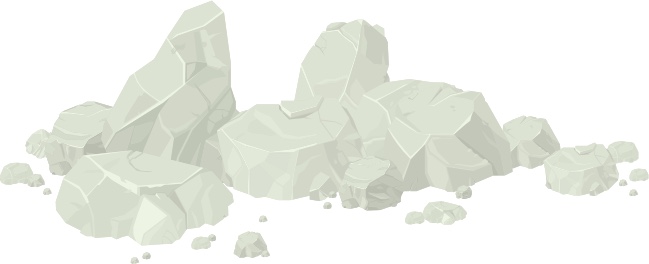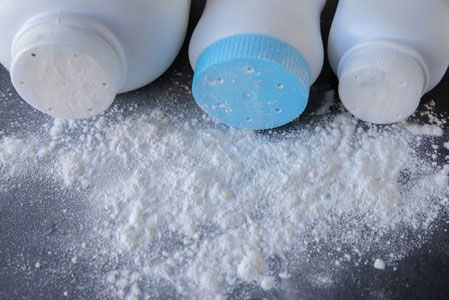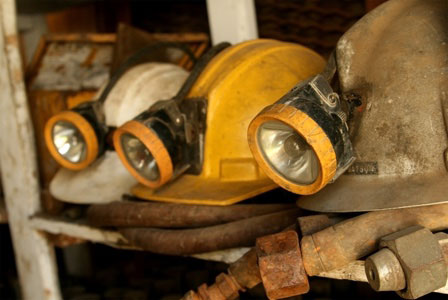The Hidden Dangers of Talc
Written by Michelle Whitmer | Edited By Walter Pacheco


Until recently, asbestos was the only mineral the public associated with mesothelioma. Public perception is changing to include talc, the softest mineral on the planet.

Lawsuits involving cosmetics giant Johnson & Johnson have resulted in multimillion-dollar verdicts for mesothelioma plaintiffs who claimed exposure to asbestos-contaminated talc caused their cancer.
Talc lawsuits filed by U.K. residents hit U.S. courts in 2019. Since then, U.K. plaintiffs have received multimillion-pound verdicts.
Asbestos and talc are two minerals that naturally form together. These minerals are similar in composition and develop together over time. Deposits of talc are commonly contaminated with asbestos and asbestos-like fibers.
Asbestos is known to cause mesothelioma, a cancer that forms primarily in the lining of the lungs or abdomen.
In 1976, the Cosmetic, Toiletry and Fragrance Association (now the Personal Care Products Council) asked its members and the cosmetic industry at large to use only asbestos-free talc moving forward.
However, no government regulations were created to ensure this measure was implemented. The Federal Food, Drug and Cosmetic Act of 1938 never required the government to test or review cosmetic products or their ingredients.
The U.S. Food and Drug Administration considers asbestos-contaminated talc unacceptable for use in cosmetics. But there are no U.S. laws prohibiting its use in cosmetics. The FDA can take action only if a product is scientifically proven to cause harm.
Proving that a product contains asbestos-contaminated talc requires specialized testing. The U.S. Environmental Protection Agency recommends a transmission electron microscope to detect asbestos.
Lawsuits claim some cosmetic manufacturers have used less-advanced testing methods in an effort to hide the asbestos in their products. Some of these tests include X-ray diffraction and polarized light microscopy.
How Talcum Powder Became Linked to Asbestos & Cancer
In July 2024, the International Agency for Research on Cancer released a report stating talc is “probably carcinogenic.” Given Group 2A classification, it’s “the second highest level of certainty that a substance can cause cancer.”
While not a conclusive determination that talc causes ovarian cancer or other cancers, the agency did find there was “strong mechanistic evidence that talc exhibits key characteristics of carcinogens in human primary cells and experimental systems.” This latest statement follows years of the agency’s studying talc and previous determinations that the mineral “possibly” causes cancer.
The IARC confirmed the link between asbestos exposure and ovarian cancer in 2011. The 2024 report states, “Talc containing asbestos’ remains a part of the definition of asbestos… and was not included in the present evaluation.” The National Institutes of Health also released a report in May 2024 that concluded its results “support a positive association between use of intimate care products, including genital talc, and ovarian cancer.” This study looked at more than 50,000 women and found increased risk of ovarian cancer as talc use and frequency increased.
What Products Contain Talc?
Different grades of talc are incorporated into a wide range of products.
- Used in baby powder
- Lotion and makeup products such as foundation
- Blush
- Eye shadow and face powder
- Used in paint
- Joint compound
- Wood putty
- Ceramic glaze
- Clay
The main companies and the asbestos-contaminated products involved in the recent cosmetic-grade talc lawsuits include Johnson & Johnson’s baby powder, Colgate-Palmolive talcum powder and Imerys Talc America for supplying talc to J&J.
Imerys and R.T. Vanderbilt Company Inc. are involved in an industrial-grade talc lawsuit over paint.
Diagnosed with Mesothelioma? Talc May Be the Cause
Anyone diagnosed with mesothelioma who has no known history of asbestos exposure may have been exposed to talc.

The majority of people with mesothelioma can identify when and where they were exposed to asbestos. Most mesothelioma patients were exposed occupationally while working blue-collar jobs. Anyone who worked in insulation, construction, mining, industrial and factory jobs faced the highest risk of exposure.
Some mesothelioma patients were exposed through a family member who worked with asbestos and unknowingly brought it home. This kind of exposure is known as secondary asbestos exposure.
Those who develop mesothelioma with no prior asbestos exposure may have developed the cancer as a result of talc exposure.
Talc Cover-Up: How Companies Hid Dangers from Consumers
Talc companies have covered up the dangerous health effects of their products like asbestos product manufacturers covered up the effects of asbestos.
Johnson & Johnson Talc Cover-Up
Unsealed documents from the 1950s and 1970s suggest that J&J knew asbestos was in their talc. Some of these documents surfaced during a 2017 lawsuit filed by more than 50 women in St. Louis who claimed J&J’s Baby Powder caused them to develop ovarian cancer.
A 1973 internal report acknowledged the presence of asbestos at J&J’s Windsor talc mine in Vermont. The report said J&J’s baby powder contained trace levels of two types of asbestos. A J&J official in the report suggested using cornstarch in their baby powder instead of talc.

A document from 1974 indicates the director of research and development at Windsor mine was aware of asbestos contamination. He recommended “the use of citric acid in the depression of chrysotile asbestos” to process talc extracted from the mine.
“The use of these systems is strongly urged by this writer to provide protection against what are currently considered to be materials presenting a severe health hazard and are potentially present in all talc ores in use at this time,” the director wrote in the document.
J&J also concealed their knowledge of asbestos-contaminated talc they bought from the Val Chisone mine near Turin, Italy. Documents revealed that a J&J research scientist convinced the mine’s owners to stop distributing the English version of a marketing booklet that referenced trace amounts of asbestos in the talc.
“The business threat is that it can raise doubts on the validity of the documentation of purity and safety of talc,” the J&J scientist wrote.
J&J continues to refute claims that its products contain asbestos.
On Feb. 9, 2018, shareholders who purchased J&J securities between 2013 and 2018 filed a class action lawsuit against J&J.
The lawsuit seeks to recover damages for alleged violations of federal securities laws. It claims that J&J knew its talc contained asbestos fibers and that exposure to those fibers causes mesothelioma and ovarian cancer.
BASF Talc Cover-Up
A class-action lawsuit was filed in 2017 against BASF and its attorneys claiming they hid and destroyed evidence of asbestos contamination at a talc mine in Vermont.
Germany-based BASF acquired the mine and its liabilities in 2006 when it bought out Engelhard Corporation, the mine’s original owner.
In 1983, Engelhard settled a lawsuit involving asbestos at the mine. Officials from Engelhard testified in depositions that the company knew asbestos was in the talc and tried to hide the evidence. Evidence was sealed upon settling, and Engelhard and its attorneys claimed in future lawsuits for more than two decades that the company’s talc was not contaminated with asbestos.
In 2009, the daughter of an Engelhard scientist filed a lawsuit claiming she developed mesothelioma as a result of secondary asbestos exposure. Her father testified that Engelhard was aware of asbestos in their talc and that the company’s legal department “told us to purge our records.”
In addition to the class-action lawsuit, another lawsuit filed in New Jersey seeks to force BASF to reveal dozens of documents about their talc. BASF claims these documents are confidential.
Talc Court Cases & Verdicts
These kinds of talc lawsuits have been underway for at least two decades. The first lawsuit involving industrial talc exposure and mesothelioma was filed in 2006.
The first lawsuit to claim that talcum powder caused ovarian cancer was filed in 2009.
Multimillion-dollar verdicts have been awarded in these cases. This includes plaintiffs from both the U.S. and the U.K.
In January 2023, Johnson & Johnson’s bankruptcy plan to resolve its talc liabilities was rejected by a federal appeals court. The ruling will return nearly 40,000 talc lawsuits to civil courts.
A New York judge ruled in 2020 that U.K. residents may file talc lawsuits in U.S. courts. The ruling was largely based on the fact that talc product manufacturers’ principal places of business are in the U.S.
List of Notable Asbestos-Talc Cases
The following list of asbestos-talc cases represents a selection of legal cases across the United States. Ongoing cases will be updated monthly, and new cases will be added as they are filed.
Avon
- Defendant: Avon
- Status: Closed, 2024
- Summary: A jury awarded $24.4 million to Cipriano Ramirez and his family who claimed his mesothelioma diagnosis was the result of his work as a janitor at an Illinois Avon facility in the 1980s where asbestos-contaminated talc products contaminated were made.
Johnson & Johnson
- Defendant: Johnson & Johnson
- Status: Closed, 2018
- Summary: A jury awarded $4.7 billion to 22 women who claimed J&J’s talc products caused them to develop ovarian cancer. The award was later reduced to $2.11 billion. Imerys, which supplied the talc to J&J, settled in June 2018 for an undisclosed amount. People familiar with the case said the settlement is close to $5 million.
Johnson & Johnson
- Defendant: Johnson & Johnson
- Status: Closed, May 2018
- Summary: A California jury awarded $21.7 million to a woman who said she developed mesothelioma as a result of using J&J’s baby powder.
Johnson & Johnson
- Defendant: Johnson & Johnson
- Status: Closed, April 2018
- Summary: A New Jersey court jury awarded $117 million to a man who said he developed mesothelioma after using J&J’s asbestos-containing talcum powder.
Colgate-Palmolive
- Defendant: Colgate-Palmolive
- Status: Settlement, October 2017
- Summary: Colgate-Palmolive avoided a trial with an undisclosed settlement to plaintiff Carol Schoeniger, who claimed she developed mesothelioma after using Cashmere Bouquet for 20 years.
Colgate-Palmolive
- Defendant: Colgate-Palmolive
- Status: Closed, May 2015
- Summary: A California jury awarded $13 million to a woman who said she developed mesothelioma after exposure to Colgate-Palmolive’s Cashmere Bouquet talcum powder. Imerys supplied the talc used in Cashmere Bouquet.
Vanderbilt Minerals and Imerys Talc America Inc.
- Defendant: Vanderbilt Minerals and Imerys Talc America Inc.
- Status: Closed, December 2017
- Summary: A California jury awarded $22 million to the estate of a man who died from mesothelioma after exposure to asbestos-containing talc used to make paint. The jury heard testimony from Imerys executives that revealed the company had mixed its talc to hide the asbestos content.
Current Asbestos-Talc Exposures & Future Cases
Recent reports of asbestos-contaminated talc in children’s toys, crayons and makeup have consumers alarmed. These products were not intended to contain any asbestos, but the talc in them was contaminated.
An investigation by Durham, North Carolina-based WTVD-TV in July 2017 found asbestos in children’s makeup sold by Justice, a retail chain that markets to young girls. Justice voluntarily recalled eight of its cosmetic products later that year.
In December 2017, a lab found tremolite asbestos in children’s makeup products sold by Claire’s, a jewelry and accessory retailer that markets to kids and teens.
Asbestos was found in other Claire’s makeup products in March 2018. The company filed for bankruptcy on March 19, 2018, to restructure its debt.
In March 2019, the FDA confirmed the presence of asbestos in the three Claire’s products tested in 2018. The company later issued a recall of the products.
“Out of an abundance of caution, we have removed the three products identified by the FDA from our stores, and are also removing any remaining talc based cosmetic products,” the retailer said.
Tests commissioned by the Environmental Working Group Action Fund (EWG) in 2015 found asbestos in children’s toys and crayons. Tremolite and chrysotile fibers were found in four brands of crayons and two amateur crime-scene kits.
The Asbestos Disease Awareness Organization commissioned tests in 2007 that revealed asbestos in children’s clay and a toy fingerprint kit named after the television series CSI: Crime Scene Investigation.
Exposure to asbestos-contaminated talc through these kinds of products could result in adverse health effects. Children exposed today may become ill later in life because of the long latency period associated with asbestos-related diseases.



